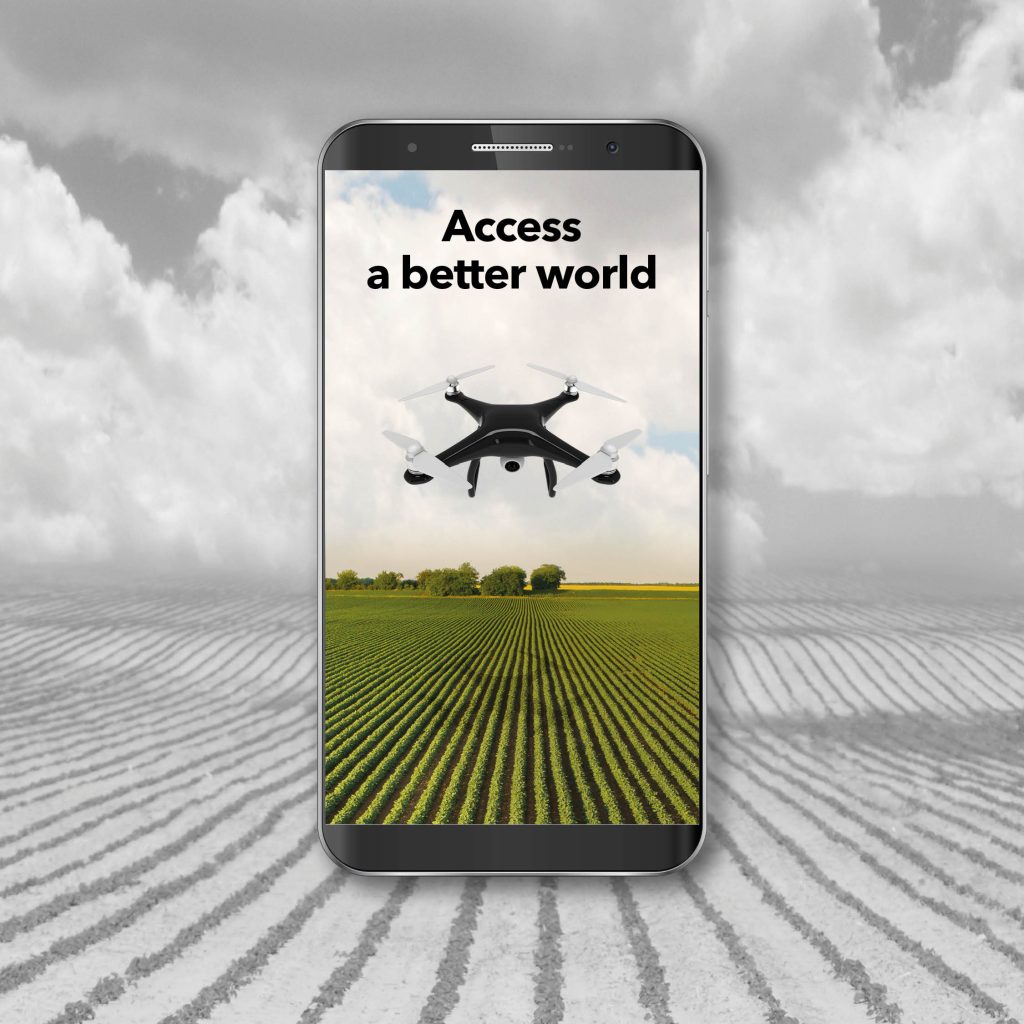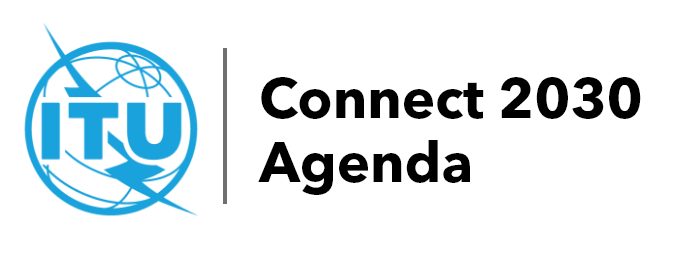
Goal 1 - Growth
Recognizing the role of telecommunications/ICTs as a key enabler for social, economic and environmentally sustainable development, ITU will work to enable and foster access to, and increase the use of, telecommunications/ICTs, foster the development of telecommunications/ICTs in the support of the digital economy and help developing countries make their transition to the digital economy. Growth in the use of telecommunications/ICTs has a positive impact on short- and long-term socio-economic development as well as on the growth of the digital economy towards building an inclusive information society. The Union is committed to working together and collaborating with all stakeholders in the telecommunication/ICT environment in order to achieve this goal.
Target 1.1: By 2023, 65% of households worldwide with access to the Internet
% of housholds worldwide with access at home
Source: ITU

No Data Found

Goal 1 - Growth
Enable and foster access to and increased use of telecommunications/ICT in support of the digital economy and society
Recognizing the role of telecommunications/ICTs as a key enabler for social, economic and environmentally sustainable development, ITU will work to enable and foster access to, and increase the use of, telecommunications/ICTs, foster the development of telecommunications/ICTs in the support of the digital economy and help developing countries make their transition to the digital economy. Growth in the use of telecommunications/ICTs has a positive impact on short- and long-term socio-economic development as well as on the growth of the digital economy towards building an inclusive information society. The Union is committed to working together and collaborating with all stakeholders in the telecommunication/ICT environment in order to achieve this goal.
Target 1.1: By 2023, 65% of households worldwide with access to the Internet
% of housholds worldwide with access at home
Source: ITU

No Data Found
Target 1.2: By 2023, 70% of individuals worldwide will be using the Internet
According to ITU data, currently, just over half the world’s population access and use the Internet, while the other half do not. Many of the world’s unconnected people live in least developed countries (LDCs), landlocked developing countries (LLDCs) and small island developing states (SIDS). Over a billion new Internet users were added in the last four years, but substantial digital divides persist between countries, communities, and people.
In today’s digital society, exclusion from online information and services are major barriers to future work opportunities and the jobs market. Digital skills are now vital to apply for jobs, file a tax return, access online banking, register to vote or get a passport, access information, news and entertainment. The right to broadband Internet access has been recognized as a citizen’s right in over twenty countries, with Governments working in partnership with operators to bring citizens online.
% of individuals worldwide using the internet
Source: ITU

No Data Found
Target 1.2: By 2023, 70% of individuals worldwide will be using the Internet
According to ITU data, currently, just over half the world’s population access and use the Internet, while the other half do not. Many of the world’s unconnected people live in least developed countries (LDCs), landlocked developing countries (LLDCs) and small island developing states (SIDS). Over a billion new Internet users were added in the last four years, but substantial digital divides persist between countries, communities, and people.
In today’s digital society, exclusion from online information and services are major barriers to future work opportunities and the jobs market. Digital skills are now vital to apply for jobs, file a tax return, access online banking, register to vote or get a passport, access information, news and entertainment. The right to broadband Internet access has been recognized as a citizen’s right in over twenty countries, with Governments working in partnership with operators to bring citizens online.
% of individuals worldwide using the internet
Source: ITU

No Data Found
Target 1.3: By 2023, Internet access should be 25% more affordable (baseline year 2017)
Affordability is cited as a major barrier to access in many Internet usage surveys. The good news is that, according to ITU data, Internet services and different digital technologies have seen regular and sustained falls in price over the last decade.
Nowadays operators offer different bundles and connectivity options. However, it can be complex for consumers to compare them, leaving consumers uncertain about what the ultimate costs may be. Consumer protection has become an important duty for many national regulators, which regularly monitor and benchmark prices for mobile and Internet access. Reducing the cost of Internet access further could help poorer individuals access the Internet more extensively and use a wider range of Internet services more often.
Fixed-broadband and mobile-data basket prices as a % of GNI p.c., 2020
Source ITU

No Data Found
Target 1.3: By 2023, Internet access should be 25% more affordable (baseline year 2017)
Affordability is cited as a major barrier to access in many Internet usage surveys. The good news is that, according to ITU data, Internet services and different digital technologies have seen regular and sustained falls in price over the last decade.
Nowadays operators offer different bundles and connectivity options. However, it can be complex for consumers to compare them, leaving consumers uncertain about what the ultimate costs may be. Consumer protection has become an important duty for many national regulators, which regularly monitor and benchmark prices for mobile and Internet access. Reducing the cost of Internet access further could help poorer individuals access the Internet more extensively and use a wider range of Internet services more often.
Fixed-broadband and mobile-data basket prices as a % of GNI p.c., 2020
Source ITU

No Data Found
Target 1.4: By 2023, all countries adopt a digital agenda/strategy
All countries should have a national Digital Agenda policy, strategy, legislation or policy statement identifying and listing their national goals and objectives in relation to broadband, and how to go about achieving these. National policies can help set out a clear vision for national infrastructure and connectivity. They can establish clear principles and priorities, and help define mechanisms for extending connectivity, while building protection and online safeguards for more vulnerable members of society. Several recent national policies specifically aim to contribute to the 2030 Agenda and the Sustainable Development Goals (SDGs).
Resources
- Digital transformation and the role of enterprise architecture
- ICT Regulatory Tracker
- Planning for Progress: Why National Broadband Plans Matter
- Data and statistics Backgrounder
- Digital inclusion of all Backgrounder
- Digital inclusion of youth Backgrounder
- ICTs to achieve the United Nations Sustainable Development Goals Backgrounder
- Policy and regulatory environments for digital transformation Backgrounder
- AI will make radiocommunications smarter
- ITU-R: Managing the radio-frequency spectrum for the world Backgrounder
- 5G – Fifth Generation of Mobile Technologies (IMT-2020 and beyond) Backgrounder
- Role of ITU in building confidence and trust in the use of ICTs Backgrounder
- National Spectrum Management
Countries adopt a digital agenda/strategy
Source ITU

No Data Found
Target 1.5: By 2023, increase the number of broadband subscriptions by 50%
Although a lot can be achieved with even basic connectivity, in today’s digitally connected society, it is high-speed connectivity which counts, as it enables access to a range of more advanced and sophisticated services, such as Virtual Reality (VR), remote imaging and telemedicine.
Countries and operators are engaged in ‘the race for cyberspace’ – seeking to roll out advanced high-speed networks and make the upgrade from 4G to 5G. Operators compare and compete on the proportion of their subscriber base now on 3G, 4G and soon, 5G connections. Consumer experience is now a top priority for many operators, which seek to enable consumers to change plane and change country with uninterrupted service, thanks to onboard Internet connectivity and a range of roaming agreements. Smartphones now dominate the handset market, with consumers eagerly awaiting the arrival of next-generation handsets capable of handling advanced data speeds.
% of housholds worldwide with internet access at home - Developing countries
Source: ITU

No Data Found
Target 1.6: By 2023, 40% of countries to have more than half of broadband subscriptions more than 10 Mbit/s
Although a lot can be achieved with even basic connectivity, in today’s digital economy, it is high-speed infrastructure and connectivity which count, as they enable access to a range of more advanced and sophisticated services, such as automated manufacturing, Internet of Things (IoT), self-driving vehicles and facial recognition cameras. Countries are engaged in ‘the race for cyberspace’ – investing in and rolling out advanced high-speed backhaul networks and making the upgrade from 4G to 5G. More and more services and businesses are shifting online, with the digitization and digital transformation of processes. The evidence is that access to high-speed infrastructure counts.
International bandwidth by region, Tbit/s**
Source: ITU
* ITU Estimate
** 1 Terabit = 1.000.000 Megabit

No Data Found
International bandwidth per internet user, kbit/s, 2021*
Source ITU
* ITU estimate

No Data Found
Target 1.7: By 2023, 40% of the population should be interacting with government services online
Today, the range of digital government services available online is multiplying fast, which are often now integral to civic life and participation in society. In many countries, it is now necessary to register your tax declarations or change in address online. Online voter registration, birth registration and passport applications are often all carried out through online access, speeding up application processes and ensuring faster and more efficient services. A bigger debate rages around digital online identity, while civil society groups are questioning the use of facial recognition and payment services by authorities, police and/or the military. Meanwhile, important trade-offs are arising between monitoring citizens’ online rights and behaviour and identifying and/or tracking potential threats (e.g. terrorists, criminals and/or activists).
Regional distribution of countries by EGDI level, 2016, 2018 and 2020
Source ITU

No Data Found
